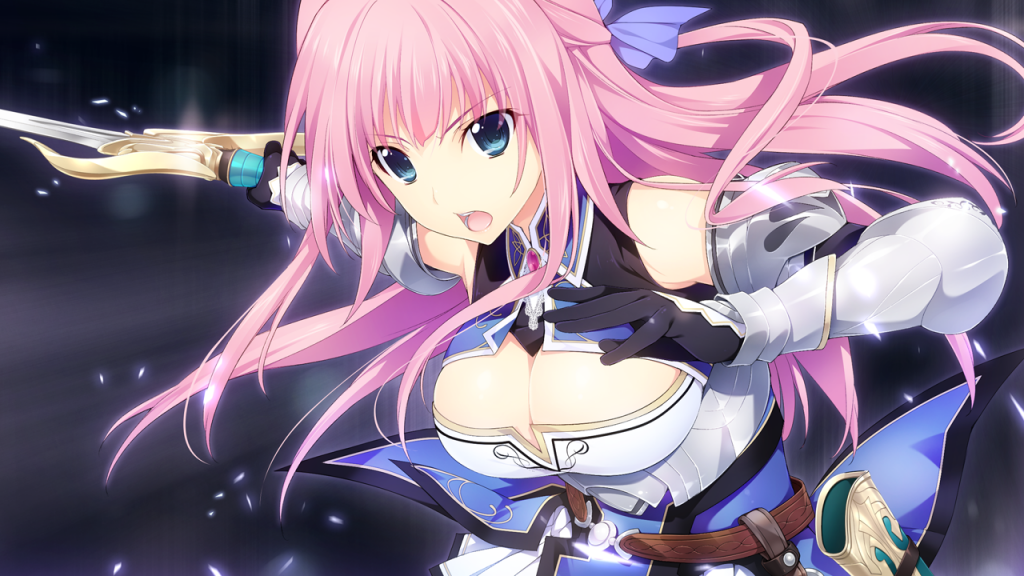
Although the work feels manufactured, it does what it sets out to do.
This review was originally written on 10-15-2015. May contain conceptual/structural spoilers.
Seikishi Melty☆Lovers, to my knowledge, is the spiritual successor to Juukishi Cutie☆Bullet, a work which was released unfinished, much to the chagrin of the fans. While I don’t have much experience with the previous work, I can attest that Seikishi, in itself as a visual novel, is actually not that bad. Seikishi is a medieval-themed work; I don’t think that the setting is really substantial or meaningful outside of being cosmetic. Indeed, while most of the routes within the work center partially around the ‘knight exams,’ the more meaningful parts of the work aren’t really in virtue of the work’s plot or setting, but its cast. Seikishi is split up into generic charage format; it has a common route, followed by individual character routes (there are only four heroines, all of them main ones). Each of the heroines have approximately 7-8 h-scenes each; comparative to works like HoshiOri, Seikishi insulates its pairing (the protagonist + the heroine of the route) past the common route (i.e. the other heroines basically ‘disappear’ from relevance once a route starts, some non-route heroines more than others). On level of its structure, Seikishi doesn’t do anything unusual nor really praiseworthy. I personally prefer works that don’t insulate their characters (HoshiOri being the Platonic form of this).
The character routes themselves center around a specific storyline (unique to each heroine; there’s no real ‘common’ main theme shared among the four, aside from incidental, but ultimately not-that-important occurrences). None of the heroines are exactly ‘novel’ or entirely complex, but they definitely do experience a good deal of growth. Seikishi’s largest strength, in my opinion, isn’t in any one particular area; its largest strength is that it doesn’t do much, it doesn’t try to do beyond what it does do, and it does what it does do, adequately. Of what it does do, it attempts to develop an affable, and enjoyable-to-read relationship between the protagonist and the heroine. I felt that the work did this job well (I won’t go into much depth analyzing the cuteness of any particular heroine, although it’s fairly evident (?) who best girl is).
The plot of the work, as mentioned, really isn’t anything to write home about. While the plot occurring within the respective heroine routes was by no mean, ‘awful,’ it was by all means of the word, very predictable. Some of the heroine routes ended really dumbly (in that logically, or even thematically, it doesn’t make sense — I’m referring mostly to a certain sword fanatic). But, all of the routes were ‘fulfilling’ in that they ended on positive notes. As it’s a character game, the plot of the work serves for the most part, only to develop the characters.
Moving on, while I had previously mentioned that the setting of the work wasn’t that ‘important,’ I did find it interesting that through the setting, the writers left room for sequel and further explanation. Recall that earlier, I had mentioned that Juukishi (translated literally to Gun Knight) was the ‘prequel’ of Seikishi; it seems that the two works occur in similar, if not, the same worlds. Indeed, one of the heroines within the work wields a gun primarily as her weapon (whereas all the other heroines predominantly use bladed weapons). This is important, because more than one of the routes involve conflict & interaction with foreign countries (including the gun-wielding country). As far as the world in which Seikishi takes place goes, there’s some room for expansion. As an additional note, I found it amusing that in Seikishi, the majority of the knights were women rather than men (and this was considered commonplace). Granted that in most works occurring within this era, the opposite tends to be true, it feels surprisingly novel (or maybe just really tacky & opportunistic, depending on the interpretation). Within Ederant, the country in which the work occurs, the Queen has the most power. So, it’s not entirely ‘random’ in this regard (women in this world as a whole seem to have more power).
Seikishi has great aesthetics (art style & CG quality). I’m personally not too picky with art quality, since I tend to categorize it as either being ‘good’ or ‘bad’ (not really ‘good,’ ‘very good,’ ‘great,’ and so forth). The music of the work was disappointingly, not that memorable. The work itself only has a vocal opening song, which only plays once. I don’t know whether there were variations of it played throughout the work, but to my knowledge, it’s pretty forgettable. The soundtrack as a whole was by all means, very ‘fitting;’ but no particular track really stuck out to me. While I’m aware that seeking a fantastic ensemble from a character game is more often than not, a futile task, it’d still have been a pleasant surprise.
So, as a whole, Seikishi was a solid read. It didn’t exceed expectations, but it didn’t fail to meet them either. It was as I expected — an easy-to-read, and entertaining character game.